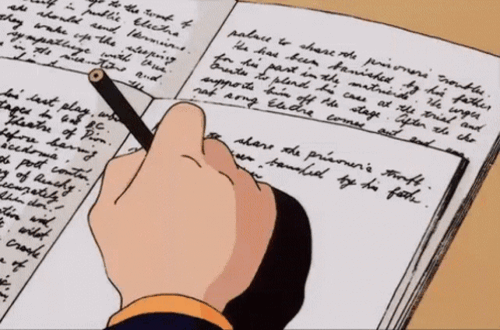
VERSIÓN ESPAÑOL:
¿Cómo va la gente de Blurt?
Les aúllo el chisme por el que seguro vienen a leer a mi cueva de meditación:
Los símbolos patrios tienen una historia que nos conecta con las raíces y aspiraciones de nuestra nación de nacimiento porque su origen rara vez es casual, ya que son el fruto de momentos históricos en los que las sociedades, en medio de luchas y esperanzas, buscaban definirse y darle forma tangible a su identidad colectiva. En cada trazo, color y figura de una bandera, en cada nota de un himno, se entrelazan historias de resistencia, unidad y, a veces, contradicciones.
Pienso en las banderas, esas piezas de tela que ondean en lo alto que no son solo colores y formas, sino un reflejo del carácter de los pueblos. Muchas surgieron en contextos de revolución, como un grito de independencia o de esperanza frente a la opresión. Cada diseño, aunque simple a primera vista, suele ser un mosaico de simbolismos: el rojo puede ser la sangre derramada por la libertad, el blanco la paz anhelada, el azul la inmensidad de los mares o cielos que inspiran sueños, sin embargo, a veces también nacen de coincidencias o decisiones pragmáticas, un recordatorio de que incluso lo sagrado puede tener orígenes mundanos.
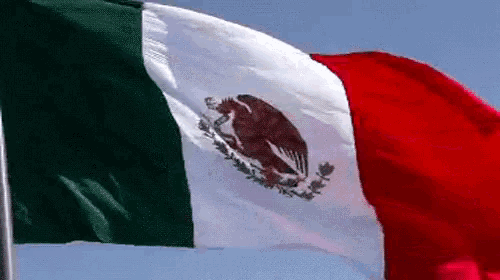
Los escudos son aún más intrigantes porque son cuentos en imágenes en donde la naturaleza, los héroes y las aspiraciones de un pueblo se mezclan. Los leones, las águilas, las montañas, las serpientes, los árboles... cada elemento habla de lo que un país valora o de lo que quiere proyectar al mundo, son, en esencia, vitrinas de orgullo y mensajes a las generaciones futuras: “Esto es lo que somos, esto es lo que creemos”.
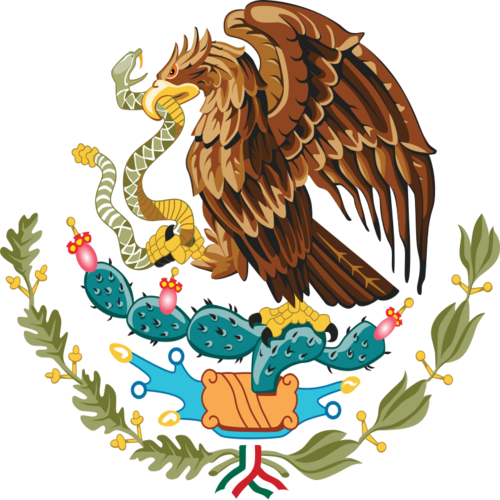
Y los himnos... ¿qué sería de ellos sin las emociones que despiertan? Es curioso pensar que, en algún momento, esas melodías y letras fueron solo palabras en papel, notas dispersas, pero cuando un pueblo las canta, algo cambia porque son narraciones que evocan la valentía, el sacrificio y, a veces, las heridas de la historia. Escucharlos puede hacer que las personas se sientan pequeñas frente a la inmensidad del colectivo y también grandes en su partecita de pertenencia.
Hay algo casi mágico en cómo estos símbolos, a pesar de ser creaciones humanas, terminan trascendiendo sus orígenes porque se convierten en puentes entre lo que fue y lo que podría ser, en promesas de que las luchas no han sido en vano, sin embargo, también invitan a la reflexión crítica: ¿qué representan hoy? ¿Siguen siendo un reflejo fiel de lo que somos, o son solo reliquias de tiempos pasados?, tal vez la respuesta esté en cómo los miramos, en que si los vemos como algo estático, pierden vida, pero si los entendemos como una conversación continua entre el pasado y el presente, entonces tienen el poder de seguir contando historias.
Los símbolos patrios, más allá de ser piezas de identidad nacional, tienen un poder único para influir en la vida de quienes los abrazan, por lo menos, yo lo considero así porque no son simplemente emblemas que adornan oficinas gubernamentales o celebraciones oficiales; son hilos invisibles que conectan a las personas entre sí, creando un sentido de pertenencia que trasciende diferencias individuales incluso si han emigrado en busca de paz, estabilidad o mejores días económicos en espacios cada vez más redicidos porque hay más fragmentación y esto hace que sea complicado encontrar algo que nos recuerde que formamos parte de un todo puede ser un alivio para el espíritu. En el país que resido ahora es rarísimo ver ese "mexicanismo" y nacionalismo que nos caracteriza cuando como mexicanos estamos en nuestro propio territorio... la única bandera con la que me he encontrado es la del consulado, por eso le decía a mi esposa que si nuestra selección nacional va al próximo mundial de fútbol, creo que solo ahí escucharemos el himno de México.
Como una persona que salió de su tierra, los símbolos patrios son como anclas en medio de los conflictos propios de la nación que nos acoge. En tiempos de crisis, una bandera ondeando puede ser un recordatorio de la fortaleza colectiva, de todas las batallas que se han librado para construir el presente no importando cuán difícil sea la situación porque el simple hecho de verla puede despertar un sentimiento de fuerza compartida, como si millones de voces invisibles susurraran al unísono: "No estás solo, seguimos adelante juntos".
Creo que los símbolos patrios también son herramientas de aprendizaje, por ejemplo, cuando un niño canta el himno nacional por primera vez, quizá no comprenda aún la profundidad de sus palabras, pero se siembra en él una curiosidad por la historia y los valores que representa. Los símbolos patrios educan sin necesidad de palabras complicadas al contar historias de luchas, de pérdidas y de victorias ganadas para ser libres de la esclavitud, por eso les digo a mis hijos que la bandera, el escudo y el himno nacional de su país son una manera de preservar la memoria colectiva y asegurarse de que las generaciones venideras sepan de dónde vienen, aunque ahora vivan a kilómetros de distancia del sitio en donde vieron la luz por primera vez porque son un puente hacia el hogar, un recordatorio de las raíces que, aunque distantes, siguen firmes para renovar cada día nuestra identidad.
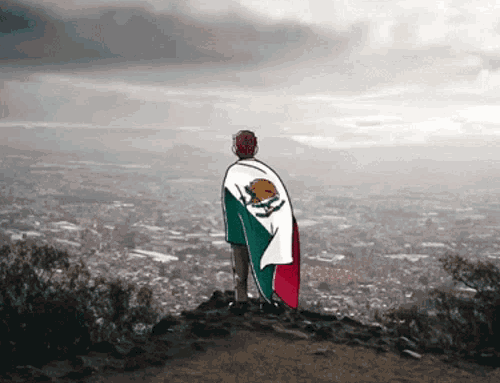
También hay un aspecto práctico porque los símbolos patrios son una herramienta para dialogar con el mundo al convertirse en una carta de presentación de una nación que dice: "esto es lo que representamos", así que en eventos internacionales, ver tu bandera entre muchas otras puede despertar un orgullo genuino, una reafirmación de que tu país, con todas sus luces y sombras, tiene un lugar en el escenario global.
Creo que el mayor beneficio está en la cohesión porque, aunque las personas dentro de un país puedan tener diferentes lenguas, creencias o perspectivas, los símbolos patrios son un recordatorio de que hay algo en común, así de paso se convierten en una sincera invitación constante a buscar la unión dentro de la diversidad, a encontrar fuerza en las diferencias e idiosincracias por más dispersas que estas sean.
Pero...
Sí, existe un "pero" porque, aunque los símbolos patrios están cargados de significados positivos, también pueden convertirse en herramientas que perpetúan estereotipos y refuerzan divisiones. A veces, lo que debería unir termina excluyendo o imponiendo una única narrativa sobre lo que significa pertenecer a un país. En esa simplificación, los símbolos pueden volverse un espejo distorsionado, reflejando solo una parte de la realidad y dejando fuera a quienes no encajan en la visión oficial.
Uno de los mayores peligros está en la imposición de una identidad única y nacionalismo extremo al llevar a los símbolos patrios al límite, en donde suelen construirse desde la perspectiva de quienes tienen el poder de narrar la historia, dejando de lado las voces de las comunidades marginadas. Esa bandera, ese himno, ese escudo, pueden convertirse en recordatorios de la exclusión para quienes no se sienten representados por ellos, sobre todo, aquellos pueblos indígenas, las minorías étnicas, las comunidades rurales que son en su gran mayoría asalariados campesinos o de gente que trabaja a destajo como si estuvieran en una época peor que la del feudalismo… así es como para muchos, los símbolos patrios no cuentan su historia, sino la de quienes alguna vez los ignoraron o sometieron.
Una bandera puede ser vista desde afuera como un resumen de todo un pueblo, y eso suele derivar en clichés. ¿Cuántas veces hemos escuchado frases como “los de este país son orgullosos”, “los de aquel son violentos”, o “los de tal nación son serviles”? Estos juicios, construidos sobre generalizaciones, borran la diversidad interna y limitan las posibilidades de que las personas sean vistas por lo que realmente son, más allá de su lugar de origen.
Sé que hay muchos emigrantes mexicanos en el país en donde estoy, sin embargo, sé que callan su procedencia incluso escondiendo sus raíces culinarias porque se sienten señalados por estereotipos relacionados con la violencia de género, con el machismo, con la mala reputación a raíz de los cárteles que han ocasionado heridas enormes con ese trabajo cronometrado de drogas, peleas por territorios, desapariciones y asesinatos tanto de los débiles como de otros enemigos fuertes que se les presentan en el camino, como es el caso de los políticos que no quieren seguir sus órdenes.
En muchos lugares del mundo, apenas dices que eres mexicano ya te relacionan, con el "Chapo" Guzmán o con miembros del cartel de Sinaloa y no con Maná, o las grandes actuaciones de Mario Moreno Cantinflas, uno de los influencers más famosos a nivel mundial como lo es Luis Villar, o con Sor Juana de la Cruz, con la tradición del Día de Muertos, con los mariachis, con la Rivera Maya, con el origen de la televisión a color, de los tratamientos anticonceptivos con píldoras que ahora se recetan a nivel mundial, o hasta, en última instancia porque sería preferible, con un perro chihuahueño.

El problema también se extiende al interior de las naciones, en donde los símbolos, en su afán de unir, pueden ser utilizados para exigir conformidad, ya que veces se espera que los ciudadanos veneren estos emblemas sin cuestionarlos y quienes no lo hacen son etiquetados como antipatriotas o desleales, este tipo de presión social convierte el orgullo nacional en un deber, no en una elección y puede ahogar cualquier crítica necesaria para el crecimiento de una sociedad, casos como los que pasan en Rusia son un ejemplo claro de lo que digo.
Otro punto preocupante es cómo los símbolos patrios pueden ser manipulados para justificar conflictos. La bandera, el himno, el escudo, pueden transformarse en armas ideológicas que dividen entre “nosotros” y “ellos”. En nombre de protegerlos, se han librado guerras, se han cerrado fronteras y se han sembrado odios y en esos casos, el simbolismo deja de ser un puente y se convierte en un muro, un obstáculo para el entendimiento y la paz.
Quizá la reflexión más incómoda sea esta: los símbolos patrios no son inherentemente buenos o malos, pero su impacto depende de cómo los usamos cada uno de nosotros porque pueden ser herramientas de unidad o de exclusión, de orgullo genuino o de imposición, así que si no somos críticos con ellos, si no cuestionamos las narrativas que los rodean, corremos el riesgo de que se conviertan en cadenas que limitan en lugar de inspirar.
Puede lo más importante sea recordar que, a fin de cuentas, ningún símbolo es más valioso u obscuro que el comportamiento de las personas a las que representa.
Ya los leo más tarde.
Chau.
ENGLISH VERSION:
How's it going, Blurt folks?
I am telling you the gossip that you are surely coming to read in my meditation cave:
National symbols have a history that connects us to the roots and aspirations of our nation of birth because their origin is rarely accidental, as they are the fruit of historical moments in which societies, amidst struggles and hopes, sought to define themselves and give tangible form to their collective identity. In each stroke, color and figure of a flag, in each note of a hymn, stories of resistance, unity and, sometimes, contradictions are intertwined.
I think of flags, those pieces of cloth that wave high above that are not just colors and shapes, but a reflection of the character of the people. Many arose in contexts of revolution, as a cry of independence or hope in the face of oppression. Each design, though simple at first glance, is often a mosaic of symbolism: red can be the blood shed for freedom, white the longed-for peace, blue the immensity of the seas or skies that inspire dreams. However, sometimes they are also born from coincidences or pragmatic decisions, a reminder that even the sacred can have worldly origins.

The coats of arms are even more intriguing because they are stories in pictures where nature, heroes and the aspirations of a people come together. Lions, eagles, mountains, snakes, trees... each element speaks of what a country values or what it wants to project to the world. They are, in essence, showcases of pride and messages to future generations: “This is who we are, this is what we believe.”

And the hymns... what would become of them without the emotions they arouse? It is curious to think that, at some point, those melodies and lyrics were just words on paper, scattered notes, but when a people sing them, something changes because they are narratives that evoke courage, sacrifice and, sometimes, the wounds of history. Listening to them can make people feel small in the face of the immensity of the collective and also great in their little part of belonging.
There is something almost magical in how these symbols, despite being human creations, end up transcending their origins because they become bridges between what was and what could be, promises that the struggles have not been in vain, however, they also invite critical reflection: what do they represent today? Are they still a true reflection of who we are, or are they just relics of times past? Perhaps the answer lies in how we look at them. If we see them as something static, they lose life, but if we understand them as a continuous conversation between the past and the present, then they have the power to continue telling stories.
National symbols, beyond being pieces of national identity, have a unique power to influence the lives of those who embrace them. At least, I consider it that way because they are not simply emblems that adorn government offices or official celebrations; they are invisible threads that connect people to each other, creating a sense of belonging that transcends individual differences, even if they have emigrated in search of peace, stability or better economic days in increasingly reduced spaces because there is more fragmentation and this makes it difficult to find something that reminds us that we are part of a whole. It can be a relief for the spirit. In the country where I now reside, it is very rare to see that "Mexicanism" and nationalism that characterizes us as Mexicans when we are in our own territory... the only flag I have come across is the one at the consulate, that is why I told my wife that if our national team goes to the next soccer World Cup, I think that only there will we hear the Mexican anthem.
As a person who left his homeland, national symbols are like anchors in the midst of the conflicts of the nation that welcomes us. In times of crisis, a waving flag can be a reminder of collective strength, of all the battles that have been fought to build the present no matter how difficult the situation is because the simple fact of seeing it can awaken a feeling of shared strength, as if millions of invisible voices whispered in unison: "You are not alone, we move forward together."
I believe that national symbols are also learning tools. For example, when a child sings the national anthem for the first time, he may not yet understand the depth of its words, but a curiosity about the history and values it represents is sown in him. National symbols educate without the need for complicated words by telling stories of struggles, losses and victories won to be free from slavery. That is why I tell my children that the flag, the coat of arms and the national anthem of their country are a way of preserving the collective memory and ensuring that future generations know where they come from, even if they now live miles away from the place where they saw the light for the first time, because they are a bridge to home, a reminder of the roots that, although distant, remain strong to renew our identity every day.

There is also a practical aspect because national symbols are a tool to dialogue with the world by becoming a letter of introduction for a nation that says: "this is what we represent", so at international events, seeing your flag among many others can awaken genuine pride, a reaffirmation that your country, with all its lights and shadows, has a place on the global stage.
I think the greatest benefit is in cohesion because, although people within a country may have different languages, beliefs or perspectives, national symbols are a reminder that there is something in common, thus becoming a sincere constant invitation to seek unity within diversity, to find strength in differences and idiosyncrasies, no matter how dispersed they may be.
But...
Yes, there is a "but" because, although national symbols are loaded with positive meanings, they can also become tools that perpetuate stereotypes and reinforce divisions. Sometimes, what should unite ends up excluding or imposing a single narrative about what it means to belong to a country. In this simplification, symbols can become a distorted mirror, reflecting only part of reality and leaving out those who do not fit into the official vision.
One of the greatest dangers is the imposition of a single identity and extreme nationalism by taking national symbols to the limit, where they are often constructed from the perspective of those who have the power to narrate history, leaving aside the voices of marginalized communities. That flag, that anthem, that shield, can become reminders of exclusion for those who do not feel represented by them, especially those indigenous peoples, ethnic minorities, rural communities that are mostly wage earners, peasants or people who work piecework as if they were in a time worse than feudalism... this is how for many, national symbols do not tell their story, but that of those who once ignored or subjugated them.
A flag can be seen from the outside as a summary of an entire people, and that often leads to clichés. How many times have we heard phrases like “people from this country are proud,” “people from that country are violent,” or “people from such and such a nation are servile”? These judgments, built on generalizations, erase internal diversity and limit the possibilities for people to be seen for who they really are, beyond their place of origin.
I know that there are many Mexican immigrants in the country where I am, however, I know that they remain silent about their origins, even hiding their culinary roots, because they feel singled out by stereotypes related to gender violence, machismo, and the bad reputation caused by the cartels that have caused enormous wounds with their timed drug work, fights for territories, disappearances and murders of both the weak and other strong enemies that come their way, such as politicians who do not want to follow their orders.
In many places around the world, as soon as you say you're Mexican, you're associated with "El Chapo" Guzmán or members of the Sinaloa cartel, but not with Maná, or with the great performances of Mario Moreno Cantinflas, one of the most famous influencers in the world, like Luis Villar, or with Sor Juana de la Cruz, with the Day of the Dead tradition, with mariachis, with the Riviera Maya, with the origin of color television, of contraceptive pill treatments that are now prescribed worldwide, or even, ultimately because it would be preferable, with a Chihuahua dog.

The problem also extends to the interior of nations, where symbols, in their desire to unite, can be used to demand conformity, since citizens are sometimes expected to venerate these emblems without question and those who do not do so are labeled as unpatriotic or disloyal. This type of social pressure turns national pride into a duty, not a choice, and can stifle any criticism necessary for the growth of a society. Cases such as those in Russia are a clear example of what I am saying.
Another worrying point is how national symbols can be manipulated to justify conflicts. The flag, the anthem, the coat of arms, can be transformed into ideological weapons that divide between “us” and “them.” In the name of protecting them, wars have been fought, borders have been closed and hatred has been sown, and in these cases, symbolism stops being a bridge and becomes a wall, an obstacle to understanding and peace.
Perhaps the most uncomfortable reflection is this: national symbols are not inherently good or bad, but their impact depends on how each of us uses them because they can be tools of unity or exclusion, of genuine pride or imposition, so if we are not critical of them, if we do not question the narratives that surround them, we run the risk of them becoming chains that limit rather than inspire.
Perhaps the most important thing is to remember that, at the end of the day, no symbol is more valuable or obscure than the behavior of the people it represents.
I'll read them later.
Bye.
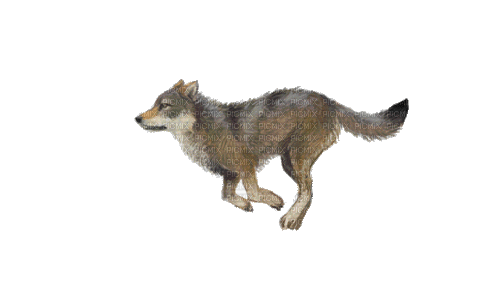
No soy una persona patriótica o nacionalista extrema, pero respeto mucho los símbolos patrios de mi país independientemente a lo que para miles de personas en el mundo entero significa ser de Colombia en su lado positivo y negativo. Pienso que quien no respeta, quien no ama a su tierra no ama ningún vínculo de otro país al que va a vivir por cualquier razón que lo haya impulsado a tomar un rumbo distinto al que tenía en su nación de nacimiento.
Los símbolos patrios son historia y recordatorios que, aunque positivos o negativos, nos recuerdan que ahora somos naciones libres e independientes, que no podemos quedarnos encerrados en el pasado de las conquistas pasadas, sino fijar nuestra vista hacia el futuro y comportarnos bien, haciendo quedar bien a lo que nos representa para que el trabajo libertario del pasado no quede en el olvido y tampoco pisoteado.
Yo sí conozco a México por Maná, por Mario Moreno Cantinflas, por los anticonceptivos orales, por lo culinario, por los paisajes, por el Chavo, el día de muertos, por Sor de la Cruz, por los mariachis, por el chihuahua e incluso por los cárteles y hasta por el Chapo Guzmán, pero lo negativo es tan reducido y vuelto cenizas por todo lo positivo que no cambia mi perspectiva de ver a un país hermano en la flor de su progreso por la gente de calidad porque los malos tienen que vivir escondidos, sin poder disfrutar de nada que les haga sentir que todo lo que han hecho y las muertes que llevan sobre sus espaldas vale la pena.
Muchas gracias, lobo por la lección de patriotismo, estuvo excelente y qué bueno que ese mismo amor se lo inculques a tus hijos, aunque ahora viven en otro lugar distinto. Saludos para ti, para tu esposa y que Dios los bendiga grandemente, mi estimado amigo mordedor 🤗🤗